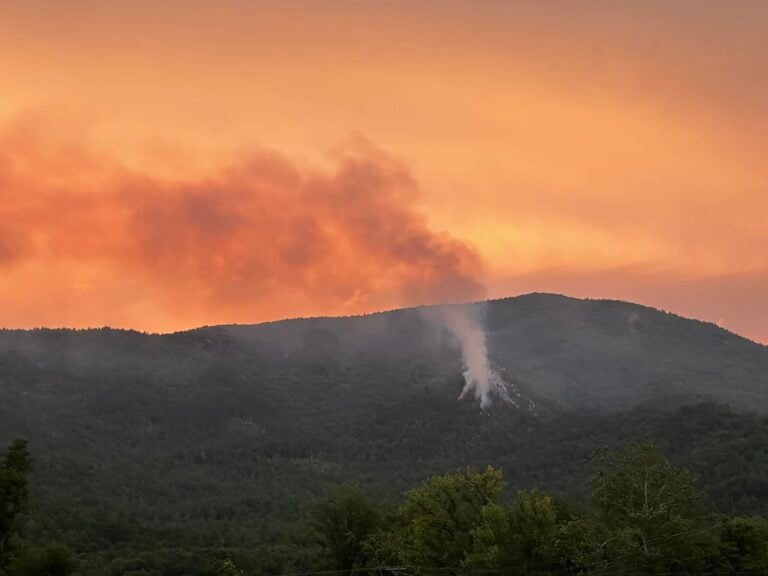When it comes to boom-and-bust extractive industries, Appalachia has been there, done that. It’s endured coal mining, clearcutting, and most recently, the fracking boom.
Now, as the country is moving toward renewable energy and mountain towns are leaning into outdoor recreation, politicians and international investors are putting their weight behind a fossil-fueled plan to turn the Ohio River Valley into a petrochemical powerhouse.
A development group is seeking a $1.9 billion loan guarantee from the U.S. Department of Energy to build the Appalachia Storage and Trading Hub—a network of underground caverns to store petrochemical byproducts of the natural gas fracking in Appalachia.
In December, U.S. Energy Secretary Rick Perry wrote an op-ed in support of the hub, calling it “an opportunity we can’t afford to waste.” West Virginia Gov. Jim Justice said it’s the “number one economic focus of my office today.” And U.S. Sen. Joe Manchin of West Virginia identified it as a priority in his agenda as ranking member of the Senate Energy and Natural Resources Committee.
If the Appalachia Development Group, the developers behind the hub, can secure the necessary funding, it will still be several years before the hub is up and running. Communities within the region, however, already are seeing the petrochemical infrastructure beginning to take shape.
In November 2017, China Energy Investment Corp. Ltd. agreed to invest $83.7 billion in natural gas development in West Virginia, including in chemical byproducts. Royal Dutch Shell is pursuing a $6 billion ethane plant in southwestern Pennsylvania, while PTT Global Chemical and South Korea-based Daelim Industrial Co. is planning a similar plant in southeastern Ohio. Another company, Mountaineer NGL, is working its way through permitting for six salt caverns to store natural gas liquids near Wheeling, West Virginia.
Each one of those announcements represents a major industrial project that has inspired both hope and fear. Paired with the Appalachian Storage and Trading Hub, however, they amount to a massive buildout of extractive infrastructure with the potential to affect the five million people who rely on the Ohio River for drinking water, not to mention the growing outdoor economy built around the waterway.
Doug Patchen, director of the Appalachian Oil and Natural Gas Research Consortium, assembled a team that concluded the Ohio River Valley holds the best prospects for the Appalachian hub because of its proximity to the shale fields and because of the presence of salt and limestone caverns with the appropriate thickness and depth to store natural gas liquids.
“A lot of people think about this hub as being one thing, but it’s really a series of storage facilities linked together at the surface, with pipelines going in and out,” Patchen said. “The idea is to be able to store multiple products and withdraw them as a constant volume for storage and industry. They stockpile it and pull it out as needed.”
Most of Appalachia drains out through the Ohio River, which flows along the borders of six states before arriving at the Mississippi River as its biggest tributary. It marks West Virginia’s western edge and Kentucky’s northern boundary, and was named in the ’90s as the second most polluted river in the U.S., after the Mississippi.
But the Ohio River’s advocates say it’s in the midst of a comeback and now provides the setting for more than 250 fishing tournaments between Pittsburgh and Cincinnati alone, as well as a burgeoning paddling community. Cincinnati’s Ohio River Paddlefest proclaims itself as the largest such festival in the country.
“Louisville, Evansville and Cincinnati all are investing millions in redeveloping and re-greening their riverfronts,” said Cheryl Johncox of the Ohio Sierra Club. “We’re making incredible strides in Ohio cleaning up the legacies of mining, and at the same time we have all these new impacts, not just to the land but also to the people who live here.”
The working model for an Appalachian petrochemical industry lies nearly 1,000 miles south along the Gulf Coast in Louisiana, where a petrochemical corridor and a series of studies have earned it the nickname: “Cancer Alley.”
Further north in Illinois, Gov. J.B. Pritzker’s administration recently banned a company from using ethylene oxide, a chemical derived from natural gas, after a public outcry and a federal study showing that even small concentrations of the substance significantly increase the risk of cancer in the surrounding community.
Health is a primary concern for groups like the Ohio Valley Environmental Coalition, who are fighting the Appalachian Storage and Trading Hub and the various petrochemical projects related to it.
“This is looking at being bigger than Cancer Alley in Louisiana, where a similar petrochemical buildout is in existence and has been for decades,” said Dustin White, an OVEC staffer and lifelong resident of West Virginia. “The proponents keep calling it a game changer for our region, but we see it as game over.”
White and other opponents rattle off a list of additional concerns such as degraded water quality; lingering air pollution in valleys prone to temperature inversions; sinkholes; fires; and gas explosions. All of these threats are based on historical precedent, from the discharge of toxic chemicals into the Ohio River to a massive 2017 fire at a Parkersburg, West Virginia, recycled plastics warehouse that raged for eight days.
And despite advocates’ claims that the hub will bring economic prosperity, opponents say those are hollow promises that echo those made repeatedly through the region’s extractive past.
“It’s another boom-bust industry,” said Beverly Reed, a near-lifelong resident of Belmont County, Ohio. “These extractive industries never last. Everyone here in Belmont County and the surrounding area who is super pumped about this, what they don’t get is that it’s going to end quickly and badly.”
That’s especially the case, she said, given that the global movement to stem climate change and the mass production of micro-plastics means that much of the rest of the world is moving away from fossil fuel-based industries.
Buoyed by international investment and the support of elected officials, the Appalachia Storage and Trading Hub seems to have momentum—and a lot more resources than the activists fighting it.
Reed and others remain undaunted.
“I’m sensitive to the fact they have so much energy behind them,” Reed said, “but the energy they have behind them is that of greed. The energy I have behind me is love and connection to the planet. Honestly, that’s the well that I draw from.”








